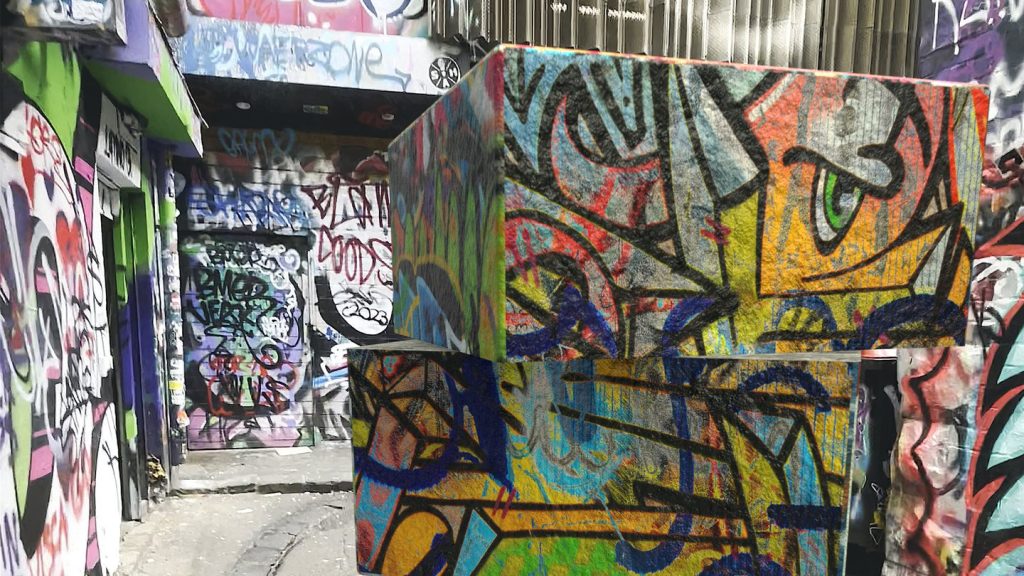Graffiti art, once confined to urban walls and city streets, has evolved dramatically in recent years. With the advent of digital technology, graffiti artists are now exploring new avenues for creative expression on virtual canvases.
Traditionally, graffiti art has been synonymous with spray paint and public spaces, serving as a medium for social commentary, self-expression, and cultural identity. Artists like Banksy have brought global attention to the power of graffiti as a form of artistic protest and narrative storytelling.
In recent years, however, digital platforms have opened up new possibilities for graffiti artists. Also platforms for graffiti company’s is new this days, the offer information about the company self by example Graffitifun, the biggest graffiti workshop company in Europe!
Digital graffiti art utilizes various digital tools and software to create immersive and interactive artworks. These tools include digital tablets, styluses, graphic design software, and even augmented reality (AR) applications.
Tools Of The Trade: Digital Vs. Traditional
Digital graffiti art differs significantly from its traditional counterpart in terms of tools and techniques. While traditional graffiti relies on physical spray cans and stencils, digital graffiti artists use tablets and digital pens to create intricate designs with precision and detail. This shift allows for greater flexibility and experimentation, as artists can easily modify and revise their work in real time.
One of the key advantages of digital graffiti is its accessibility. Artists no longer need access to physical walls or public spaces; instead, they can create and showcase their work on virtual canvases accessible to a global audience. This ease of access has made graffiti art more open to everyone, helping new artists get known and build an online following.
Techniques In Digital Graffiti Art
1. Digital Painting Techniques: Graphic design programs like Adobe Photoshop and Illustrator are used by artists to make digital drawings that look and feel like graffiti. You can use these tools’ many styles, colors, and effects to make artwork that is both unique and interesting.
2. Augmented Reality (AR) Integration: Some digital graffiti artists incorporate AR technology into their work, allowing viewers to interact with and experience their artwork in real-world environments. AR graffiti can transform ordinary spaces into immersive art installations, blurring the line between digital and physical art forms.
3. Motion Graphics And Animation: Advanced digital graffiti techniques include the use of motion graphics and animation to bring artwork to life. Artists can create animated graffiti that responds to user interactions or changes over time, adding an element of dynamism and storytelling to their work.
Creative Workshops And Graffiti Companies
In response to the growing popularity of digital graffiti art, many graffiti companies and creative workshops now offer specialized training and workshops for aspiring digital artists. These workshops provide hands-on experience with digital tools and techniques, as well as guidance on developing a unique artistic style.
Graffiti workshops serve as incubators for creativity, fostering collaboration and innovation among artists. They provide a supportive environment where artists can experiment with new ideas and techniques, guided by experienced mentors and instructors. Workshops often culminate in public exhibitions or digital showcases, allowing artists to share their work with a wider audience.
The Role Of Graffiti Companies
Graffiti companies play a crucial role in promoting and supporting digital graffiti art. These companies may specialize in digital mural installations, AR graffiti experiences, or collaborative art projects that combine digital and traditional techniques. By partnering with artists and organizations, graffiti companies facilitate the creation of large-scale, impactful artworks that resonate with communities and audiences worldwide.
Future Directions And Innovations
Looking ahead, the future of digital graffiti art promises continued innovation and experimentation. Advances in AR technology, artificial intelligence (AI), and virtual reality (VR) are expected to expand the possibilities for digital graffiti artists, allowing them to create immersive and interactive experiences that defy traditional boundaries.
As digital tools become more accessible and sophisticated, the line between digital and traditional graffiti art will continue to blur. Artists will increasingly leverage technology to push artistic boundaries and challenge conventions, creating a new era of digital graffiti art that is both socially relevant and technologically groundbreaking.
Conclusion
Digital graffiti art represents a dynamic intersection of technology, creativity, and urban culture. By embracing digital tools and techniques, graffiti artists are redefining what it means to create and experience art in the digital age. As the art form continues to evolve, workshops and graffiti company’s role in nurturing talent, fostering innovation, and shaping the future of digital graffiti art worldwide.
In summary, digital graffiti techniques not only bring art to the virtual canvas but also pave the way for new forms of artistic expression and community engagement. Whether through AR installations, digital murals, or collaborative workshops, digital graffiti art continues to captivate audiences and inspire creativity on a global scale.

